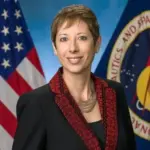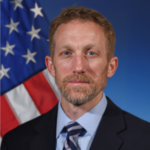Cislunar strategy, science, security and synergy
The decade of the 2020s is the busiest decade for lunar landings since the 1970s. NASA estimates this increase in cislunar activity will only increase in the coming years. With this in mind, panelists at the 39th annual Space Symposium discuss the strategies and science to keep cislunar space peaceful, accessible and available for scientific research.
The moderator for this panel is Dipak Srinivasan, civil space mission area external engagements lead at the Johns Hopkins University Applied Physics Laboratory.
The panel includes Nujoud Merancy, deputy associate administrator of NASA’s Strategy and Architecture Office; Lindsay Millard, assistant director for space security in the Office of Science and Technology Policy; Jamie Porter, director of the Lunar Surface Innovation Consortium and the assistant group supervisor in the Space Environmental Effects Group at Johns Hopkins Applied Physics Laboratory; and Philip Root, director of the DARPA Strategic Technology Office.
“In the future, data from Space Surveillance Telescope may be used and combined with commercial data by the Department of Commerce as they extend their space situational capabilities into cislunar space,” Millard said. “Diversity of data sets, sensor types and geographic locations combined with open sharing enables transparency and safety of flight for all nations.”




